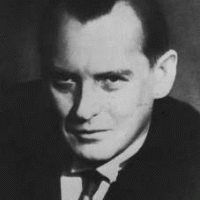
The Names Behind the Openings, part 1
In Modern Chess Openings, vol 14 (MCO-14) there are 47 major named openings, many of which draw those names from either their creators or their proponents. This is the first of a series of blogs that will share with you a bit of the history regarding those creative individuals whose names you will recognize.
Alekhine’s Defense is one of the “hypermodern” openings that are characterized by allowing the opponent to establish pawn control over the center, and then undermining that control by attacking it. The opening is identified by the simple moves 1. e4 Nf6.
Although the opening was studied a century earlier by Allgaier, it takes its name from Russian Alexander Alekhine (1892-1946), who gained the world championship title by easily – and completely unexpectedly – defeating Capablanca in 1927 (click here for the match games) to become only the 4th world champion (+6 =25 –3).
Alekhine was famous for his exciting attacks, often featuring sacrifices. It is no wonder then that he is the namesake for this opening, which Nick de Firmian, author of MCO-14, describes as provocative and combative.
Perhaps his turbulent life led to this style of play, for Alekhine had been taken a prisoner of war by the Germans in 1914, and had anything but a quiet life even afterwards. A former member of the Communist Party, Alekhine renounced the party while living in France, then later tried to ingratiate himself to the Soviet regime after that nation began to dominate chess. The Soviets only forgot about his anti-Soviet statements after his death, when they tried to claim him for their own benefit, but his widow refused to allow his burial in Russia.
Alekhine was absolutely addicted to chess, studying 8 hours a day from boyhood, but he was addicted to alcohol as well, and it was likely due to this that he lost his world title to Euwe in 1935, though he regained it in 1937. In 1925 Alekhine set a new world record by playing 28 simultaneous games of blindfold chess, winning 22 of them and only losing 3. (However, that world record has long since been crushed. For more on this, read my previous blog by clicking on its title, “Blindfold Chess”.)
Alekhine was not well liked, and has been described as devious and untrustworthy. He lusted after Capablanca’s title, and was careful to cultivate his friendship so that Capa would accept his challenge. Yet, after defeating the brilliant Cuban, Alekhine did everything he could to avoid a rematch, and often denigrated the previous champion in his annotations.
In the early 1940’s three anti-Semitic articles were published in Nazi Germany under Alekhine’s authorship, which he later denied. However, in 1956 the original papers were discovered among his wife’s possessions. They were written in his hand.
Alekhine died shortly before defending his world title against Botvinnik in 1946, and was the only world champion to die while holding the title. He is interred in Montparnasse cemetery in Paris and has a headstone provided by FIDE.
Here is a nice game showing Alekhine (pictured above) playing the Alekhine as Black. His opponent is Maroczy, who, coincidentally, got into a bind and resigned.
The Benko Gambit consists of the moves 1. d4 Nf6 2. c4 c5 3. d5 b5 and is named after the Hungarian grandmaster Pal Benko, although Alekhine called it the Opocensky Gambit, after the Czech master who played it against Stahlberg in 1936. The same opening was called the Volga Gambit in the USSR, where it was studied intensively in 1946. The opening is most notably played today by John Fedorowicz, who authored the portion of MCO-14 that presents it.
Pal Benko analyzed the opening in the 1960’s and published a book about it in 1973, modestly entitled The Benko Gambit which led to the opening’s popularity in the 70’s. Benko is no slouch, having beaten the likes of Fischer and Tal, using Benko’s Opening (1. g3), rather than Benko’s Gambit. It was probably too risky to sacrifice a pawn to either of those players.

Benko’s career has been inextricably entwined with Bobby Fischer’s. Benko, incidentally, convinced Fischer to start dressing respectably after he became famous, and had his Hungarian tailor make several suits for the young Bobby. Despite this haberdashery debt owed to Benko, Fischer apparently got into a shouting match with him over Fischer’s demand to the exclusive use of their ‘shared’ second, Art Bisguier, at the Candidates Tournament in Curacao. The argument turned to a physical confrontation, but the two later made up after a long period where they refused to speak to one another.
In 1970, Benko qualified to play in the Interzonal, leading up to the World Championship match in 1972. There was a debate at the FIDE Congress whether to allow Fischer to compete, but the Soviet contingent strongly opposed his participation. However, it was decided that if one of the 3 qualifying Americans were to voluntarily give up their spot for Fischer, he would be allowed to play. In what became a real-life chessic sacrifice, Benko gave up his spot, which ultimately led to Fischer becoming the world champion in 1972.
Benko is an expert on the endgame, and still writes a column in Chess Life called the “Endgame Lab.”
Here is Benko winning with the Benko Gambit.
Note to the gentle reader: This blog is one of a continuing series that discusses the players whose names grace many openings. Here are the links to these blogs published to date:
The Names behind the Openings, Part 1
Bird to Bogo
Caro, Kann and Chigorin – Openings Players
Evans and Göring: Gambiteers
Who was Giuoco Piano?
A Greenfield Opening
Who Suggested 1. b3 ??
Nimzowitsch (in 4 syllables)

